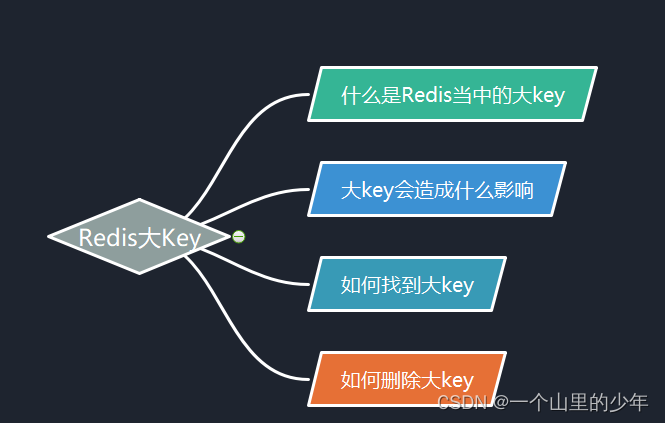需求
公司里使用OneByOne的方式删除数据,为了防止一段时间内删除数据过多,让我这边做一个接口限流,超过一定阈值后报异常,终止删除操作。
实现方式
创建自定义注解 @limit 让使用者在需要的地方配置 count(一定时间内最多访问次数)、 period(给定的时间范围),也就是访问频率。然后通过LimitInterceptor拦截方法的请求, 通过 redis+lua 脚本的方式,控制访问频率。
源码
Limit 注解
用于配置方法的访问频率count、period
|
1 2 3 4 5 6 7 8 9 10 11 12 13 14 15 16 17 18 19 20 21 22 23 24 25 26 27 28 29 30 |
import javax.validation.constraints.Min; import java.lang.annotation.*; @Target({ElementType.METHOD, ElementType.TYPE}) @Retention(RetentionPolicy.RUNTIME) @Inherited @Documented public @interface Limit { /** * key */ String key() default ""; /** * Key的前缀 */ String prefix() default ""; /** * 一定时间内最多访问次数 */ @Min(1) int count(); /** * 给定的时间范围 单位(秒) */ @Min(1) int period(); /** * 限流的类型(用户自定义key或者请求ip) */ LimitType limitType() default LimitType.CUSTOMER; } |
LimitKey
用于标记参数,作为redis key值的一部分
|
1 2 3 4 5 6 7 8 |
import java.lang.annotation.ElementType; import java.lang.annotation.Retention; import java.lang.annotation.RetentionPolicy; import java.lang.annotation.Target; @Target(ElementType.PARAMETER) @Retention(RetentionPolicy.RUNTIME) public @interface LimitKey { } |
LimitType
枚举,redis key值的类型,支持自定义key和ip、methodName中获取key
|
1 2 3 4 5 6 7 8 9 10 11 12 13 14 |
public enum LimitType { /** * 自定义key */ CUSTOMER, /** * 请求者IP */ IP, /** * 方法名称 */ METHOD_NAME; } |
RedisLimiterHelper
初始化一个限流用到的redisTemplate Bean
|
1 2 3 4 5 6 7 8 9 10 11 12 13 14 15 16 17 18 19 |
import org.springframework.beans.factory.annotation.Qualifier; import org.springframework.context.annotation.Bean; import org.springframework.context.annotation.Configuration; import org.springframework.data.redis.core.RedisTemplate; import org.springframework.data.redis.core.StringRedisTemplate; import org.springframework.data.redis.serializer.GenericJackson2JsonRedisSerializer; import org.springframework.data.redis.serializer.StringRedisSerializer; import java.io.Serializable; @Configuration public class RedisLimiterHelper { @Bean public RedisTemplate<String, Serializable> limitRedisTemplate(@Qualifier("defaultStringRedisTemplate") StringRedisTemplate redisTemplate) { RedisTemplate<String, Serializable> template = new RedisTemplate<String, Serializable>(); template.setKeySerializer(new StringRedisSerializer()); template.setValueSerializer(new GenericJackson2JsonRedisSerializer()); template.setConnectionFactory(redisTemplate.getConnectionFactory()); return template; } } |
LimitInterceptor
使用 aop 的方式来拦截请求,控制访问频率
|
1 2 3 4 5 6 7 8 9 10 11 12 13 14 15 16 17 18 19 20 21 22 23 24 25 26 27 28 29 30 31 32 33 34 35 36 37 38 39 40 41 42 43 44 45 46 47 48 49 50 51 52 53 54 55 56 57 58 59 60 61 62 63 64 65 66 67 68 69 70 71 72 73 74 75 76 77 78 79 80 81 82 83 84 85 86 87 88 89 90 91 92 93 94 95 96 97 98 99 100 101 102 103 104 105 106 107 108 109 110 111 112 113 114 115 116 117 118 119 120 121 122 123 124 125 126 127 128 129 130 131 132 133 134 135 136 137 |
import com.google.common.collect.ImmutableList; import com.yxt.qida.api.bean.service.xxv2.openapi.anno.Limit; import com.yxt.qida.api.bean.service.xxv2.openapi.anno.LimitKey; import com.yxt.qida.api.bean.service.xxv2.openapi.anno.LimitType; import lombok.extern.slf4j.Slf4j; import org.apache.commons.lang3.ArrayUtils; import org.apache.commons.lang3.StringUtils; import org.aspectj.lang.ProceedingJoinPoint; import org.aspectj.lang.annotation.Around; import org.aspectj.lang.annotation.Aspect; import org.aspectj.lang.reflect.MethodSignature; import org.springframework.beans.factory.annotation.Autowired; import org.springframework.context.annotation.Configuration; import org.springframework.data.redis.core.RedisTemplate; import org.springframework.data.redis.core.script.DefaultRedisScript; import org.springframework.data.redis.core.script.RedisScript; import org.springframework.web.context.request.RequestContextHolder; import org.springframework.web.context.request.ServletRequestAttributes; import javax.servlet.http.HttpServletRequest; import java.io.Serializable; import java.lang.annotation.Annotation; import java.lang.reflect.Method; @Slf4j @Aspect @Configuration public class LimitInterceptor { private static final String UNKNOWN = "unknown"; private final RedisTemplate<String, Serializable> limitRedisTemplate; @Autowired public LimitInterceptor(RedisTemplate<String, Serializable> limitRedisTemplate) { this.limitRedisTemplate = limitRedisTemplate; } @Around("execution(public * *(..)) && @annotation(com.yxt.qida.api.bean.service.xxv2.openapi.anno.Limit)") public Object interceptor(ProceedingJoinPoint pjp) { MethodSignature signature = (MethodSignature) pjp.getSignature(); Method method = signature.getMethod(); Limit limitAnnotation = method.getAnnotation(Limit.class); LimitType limitType = limitAnnotation.limitType(); int limitPeriod = limitAnnotation.period(); int limitCount = limitAnnotation.count(); /** * 根据限流类型获取不同的key ,如果不传我们会以方法名作为key */ String key; switch (limitType) { case IP: key = getIpAddress(); break; case CUSTOMER: key = limitAnnotation.key(); break; case METHOD_NAME: String methodName = method.getName(); key = StringUtils.upperCase(methodName); break; default: throw new RuntimeException("limitInterceptor - 无效的枚举值"); } /** * 获取注解标注的 key,这个是优先级最高的,会覆盖前面的 key 值 */ Object[] args = pjp.getArgs(); Annotation[][] paramAnnoAry = method.getParameterAnnotations(); for (Annotation[] item : paramAnnoAry) { int paramIndex = ArrayUtils.indexOf(paramAnnoAry, item); for (Annotation anno : item) { if (anno instanceof LimitKey) { Object arg = args[paramIndex]; if (arg instanceof String && StringUtils.isNotBlank((String) arg)) { key = (String) arg; break; } } } } if (StringUtils.isBlank(key)) { throw new RuntimeException("limitInterceptor - key值不能为空"); } String prefix = limitAnnotation.prefix(); String[] keyAry = StringUtils.isBlank(prefix) ? new String[]{"limit", key} : new String[]{"limit", prefix, key}; ImmutableList<String> keys = ImmutableList.of(StringUtils.join(keyAry, "-")); try { String luaScript = buildLuaScript(); RedisScript<Number> redisScript = new DefaultRedisScript<Number>(luaScript, Number.class); Number count = limitRedisTemplate.execute(redisScript, keys, limitCount, limitPeriod); if (count != null && count.intValue() <= limitCount) { return pjp.proceed(); } else { String classPath = method.getDeclaringClass().getName() + "." + method.getName(); throw new RuntimeException("limitInterceptor - 限流被触发:" + "class:" + classPath + ", keys:" + keys + ", limitcount:" + limitCount + ", limitPeriod:" + limitPeriod + "s"); } } catch (Throwable e) { if (e instanceof RuntimeException) { throw new RuntimeException(e.getLocalizedMessage()); } throw new RuntimeException("limitInterceptor - 限流服务异常"); } } /** * lua 脚本,为了保证执行 redis 命令的原子性 */ public String buildLuaScript() { StringBuilder lua = new StringBuilder(); lua.append("local c"); lua.append("\nc = redis.call('get',KEYS[1])"); // 调用不超过最大值,则直接返回 lua.append("\nif c and tonumber(c) > tonumber(ARGV[1]) then"); lua.append("\nreturn c;"); lua.append("\nend"); // 执行计算器自加 lua.append("\nc = redis.call('incr',KEYS[1])"); lua.append("\nif tonumber(c) == 1 then"); // 从第一次调用开始限流,设置对应键值的过期 lua.append("\nredis.call('expire',KEYS[1],ARGV[2])"); lua.append("\nend"); lua.append("\nreturn c;"); return lua.toString(); } public String getIpAddress() { HttpServletRequest request = ((ServletRequestAttributes) RequestContextHolder.getRequestAttributes()).getRequest(); String ip = request.getHeader("x-forwarded-for"); if (ip == null || ip.length() == 0 || UNKNOWN.equalsIgnoreCase(ip)) { ip = request.getHeader("Proxy-Client-IP"); } if (ip == null || ip.length() == 0 || UNKNOWN.equalsIgnoreCase(ip)) { ip = request.getHeader("WL-Proxy-Client-IP"); } if (ip == null || ip.length() == 0 || UNKNOWN.equalsIgnoreCase(ip)) { ip = request.getRemoteAddr(); } return ip; } } |
TestService
使用方式示例
|
1 2 3 4 |
@Limit(period = 10, count = 10) public String delUserByUrlTest(@LimitKey String token, String thirdId, String url) throws IOException { return "success"; } |


